Yesterday, Diana had some thoughtful musings on the sanctuary’s blog and invited you all, our followers and supporters, to ask questions.
One topic that came up several times, as it has in the past, is that of chimpanzee reproductive behavior. I’d like to thank you all for giving me an excuse to write this blog for two main reasons. First, I thrive on awkwardness. Second, the sex lives of chimpanzees can really be fascinating.
For decades, scientists observed the sexual behavior of chimpanzees and other primates with the goal of learning more about our own species’ habits. The initial logic, seemingly, was that our ape cousins must have a system that closely resembles that of our common ancestor. By watching free-ranging primates go about their business, anthropologists hoped to gain a window into our evolutionary past that wasn’t obscured by the filter of our own culture.
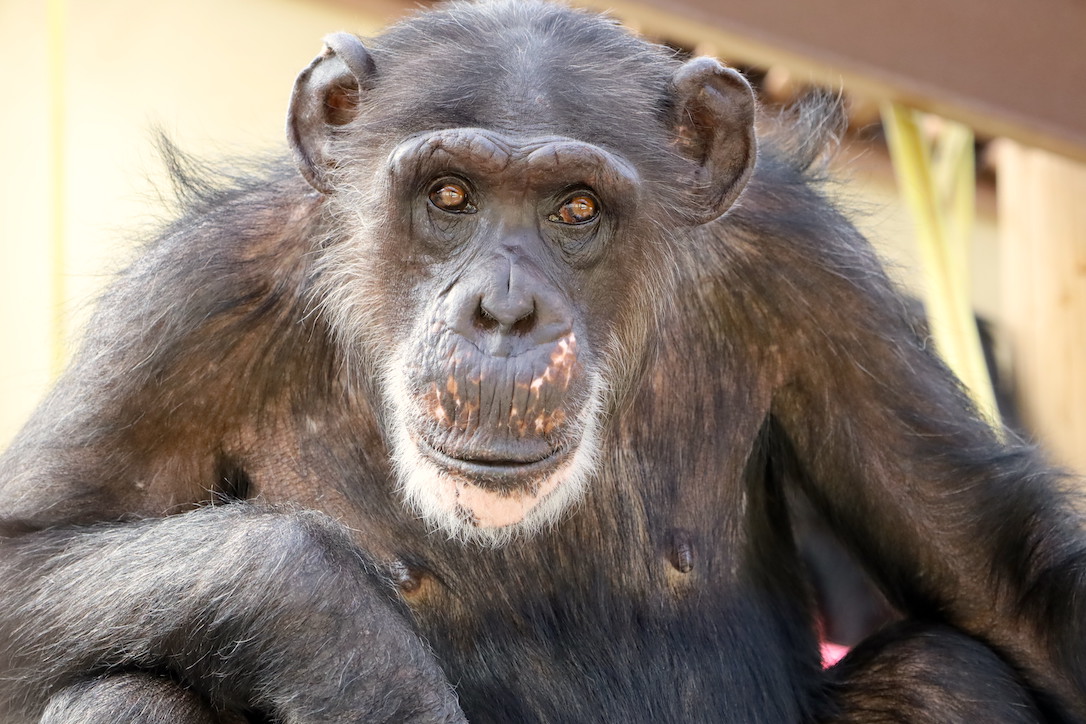
From our modern perspective, we now have a greater appreciation for a simple fact; chimps are related to us, but they’re not necessarily anything like our common ancestor. Chimps and humans have been separate for six million years, during which our respective lineages were subjected to extremely different pressures that caused us to diverge physically, behaviorally, and cognitively. Our branch diversified over time into several types of humans that took over the globe (the rest of which we then subsequently absorbed or drove to extinction). Meanwhile, the nearest branch grew in a different direction and, as far as we know, forked into a pair of twigs: chimpanzees and bonobos. Using this reasoning, the other primates are not really primitive. They’re not human-like oddities that emerged among the animals, nor are they less-evolved versions of early humans. They’re something different entirely. Chimpanzees are just chimpanzees.
For the most part, chimpanzees do resemble us (and vice versa). They have the same amount of hair (which is just coarser and longer than ours), similar skin and pigmentation, and muscles and bones that are arranged much like a human’s. Upon first glance, it can be difficult to identify any conspicuous trait that is uniquely chimpanzee, but they become familiar over time. Longer fingers… larger canine teeth… a pronounced brow ridge… shorter, stockier bodies… and, of course, the butts.
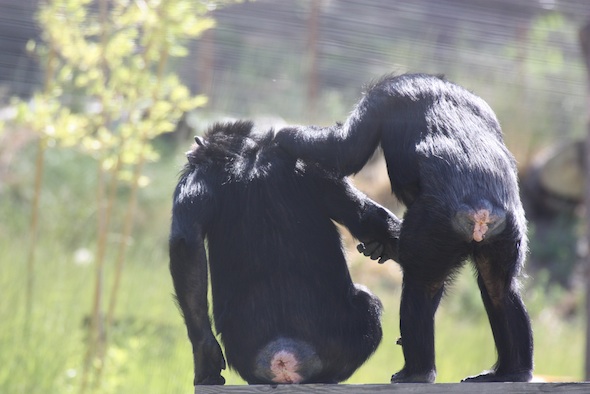
Male chimpanzees do not have flashy backsides. In fact, the norm is to have a flat, gray callous-like pad that serves as a portable seat cushion and seems to keep the pressure off of their oversized testicles. Relative to humans, adult male chimps have much larger testicles for their body size. (It looks like they’re hiding a pair of mangoes in there.) Meanwhile, their smaller penises stay hidden until they’re needed for copulation. The testes produce crucial hormones that influence behavior and physical development, so neuters are not a recommended form of population control for chimps (nor are they particularly safe or humane). Instead, most sanctuaries rely on less-invasive vasectomies to keep their males from successfully impregnating females, and many also use forms of birth control for females. As stated on our website, there are several good reasons to not breed captive chimpanzees.
Much like in humans, female chimpanzees are anatomically different from males. Biologists call this disparity sexual dimorphism. In chimps, adult females have an entire appendage dedicated to advertising their reproductive status. Often referred to as a “swelling,” this wrinkly patch of skin is composed of the vulva and surrounds the anal and vaginal openings. This flap of tissue can inflate with over a liter of fluid, causing it to become rosy and bulbous. It looks uncomfortable to be so swollen for almost two weeks, but it’s a natural aspect of the chimpanzee experience. This process is often captured, unintentionally, in the photos we take while developing content for the blog.
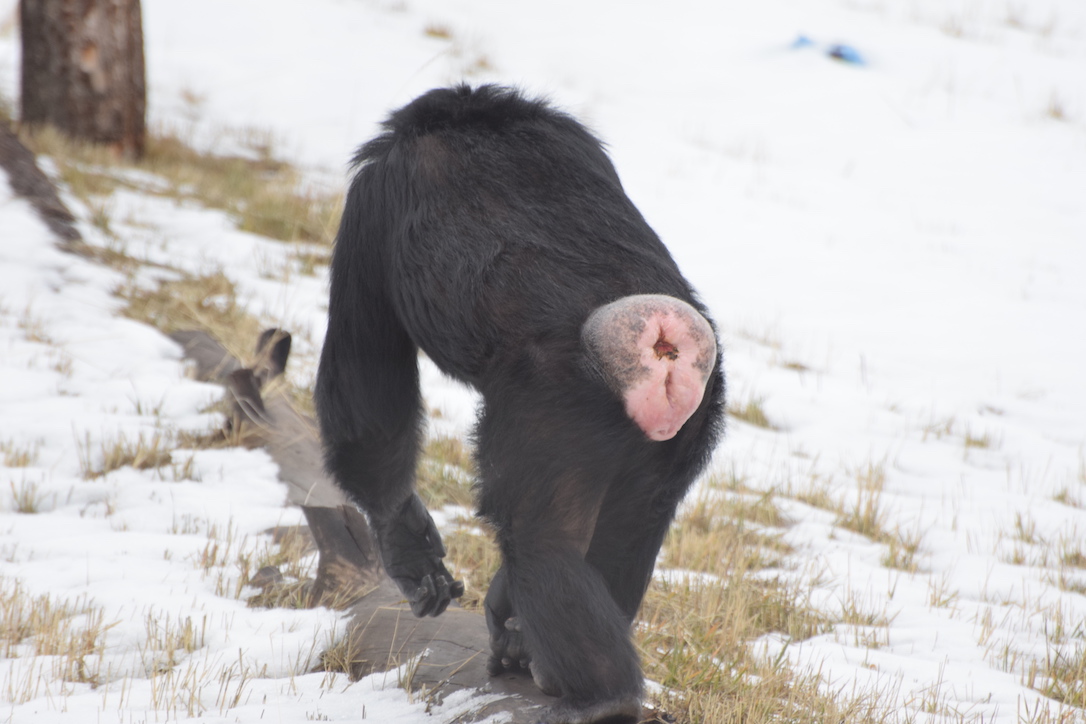
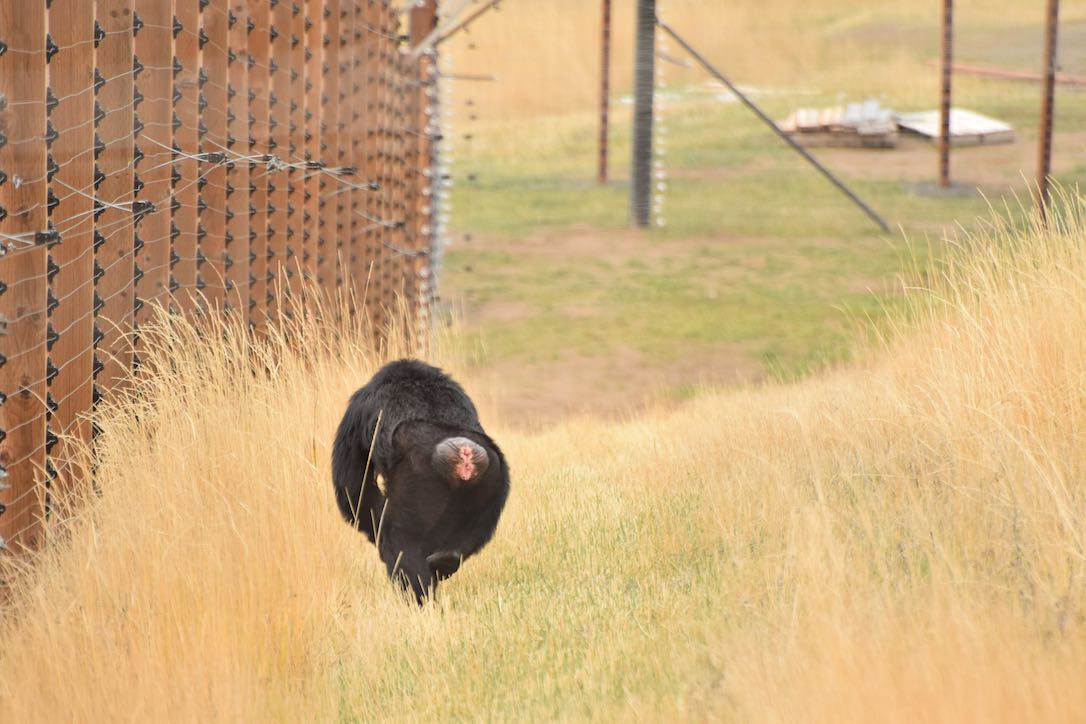
Swellings help chimpanzees to maximize their reproductive potential. Essentially, the bright pink signal lets males know when a female is likely to ovulate, and that female receives a corresponding flood of attention and may even temporarily rise in social rank. As J.B. explained back in 2013, chimpanzee menstrual cycles are quite similar to ours (and notably different from the estrus cycles observed in many other mammals), but the swelling corresponds to some key differences. Ovulating female chimpanzees often choose to mate with any interested males, and those males usually attempt to mate with each swollen female (although the alpha male may guard them from the others). For this reason, females need a way to let the guys know what’s going on, and a bright pink swelling usually does the trick. A tumescent swelling literally brings all the boys to the yard.
Interestingly, females will often allow subordinate males to mate with them and will continue to mate frequently even once pregnancy has begun. Because of this, males have little idea which offspring are theirs and are therefore incentivized to protect them all equally. This pattern of paternity confusion acts as insurance against coups. If a new alpha emerges, he will be less likely to cull his group’s infants because he may have sired them back when he was still a subordinate. Furthermore, male chimps in the same community tend to be related to each other, so the potential costs of infanticide tend to outweigh any competitive advantages. In other primate societies where the alphas have exclusive mating rights, changes in leadership can be tragic for newborn infants.
You may have seen on the blog that the sanctuary’s male residents are fascinated by swellings, but don’t seem to have the social skills required to successfully copulate. This is not uncommon for captive chimps who were raised in abnormal social groups. However, it’s worth noting that Burrito and Willy B’s attractions to the females’ swellings are quite obvious and seem to have developed without the enculturation of a larger chimpanzee society. Furthermore, the life-saving castration that Burrito endured does not seem to affect this behavior, and he still watches over any swollen females with keen interest.

One question that often arises is that of female contraception. As with many dilemmas relating to captive chimpanzees, we do our best to balance natural processes, physical health, emotional impacts, and logistical challenges. In the case of birth control, our team evaluates each female’s unique needs and consults with outside experts in order to give them the best experience that this environment allows. Therefore, we do not have a comprehensive protocol for administering contraceptives and each individual case is managed separately.
Foxie, Missy and Honey B underwent hysterectomies at their previous facilities due to underlying health issues. We also suspect that Negra had one in the past, although it’s possible that she has simply transitioned through menopause. In all of these cases, no contraception is necessary. These females don’t swell, have little chance of becoming pregnant, and aren’t prone to reproductive health issues.
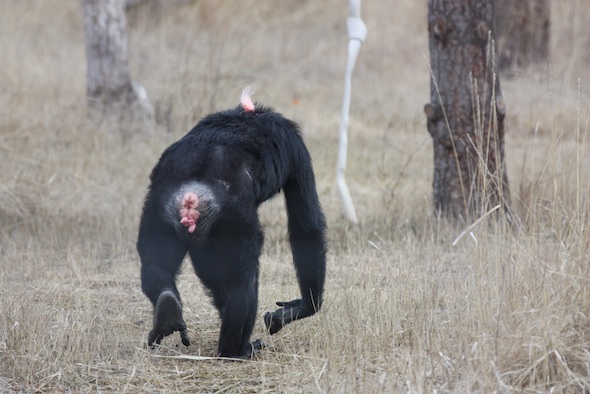
Mave and Annie have no known health issues and are at low risk of pregnancy because both of the sanctuary’s males, in addition to being sexually naïve, are medically unable to reproduce. (Burrito no longer has testicles and Willy B’s vasectomy is still serving its purpose.) In these cases, we’re not intervening with contraceptives because there is no clinical reason to do so. Without a medical issue, we’re more comfortable with letting Annie and Mave’s respective cycles progress naturally, for now.
Jody and Jamie, on the other hand, receive daily doses of medroxyprogesterone (an oral contraceptive) for reasons other than preventing pregnancy. The medication is relatively bland and dissolves well in juice, so both females will gladly take it from their caregivers each morning. In Jody’s case, her recent medical exams allowed us to detect a small uterine mass that we suspect is a mineralized fibroid, and the medroxyprogesterone is a recommended treatment for managing these. Jamie, meanwhile, has a recurring anal fistula that is not severe but seems to cause more discomfort when she is swollen. Neither Jamie nor Jody swell while they are on “the pill,” although I have seen that female chimpanzees at other sanctuaries may continue to do so (albeit with changes in frequency and intensity).
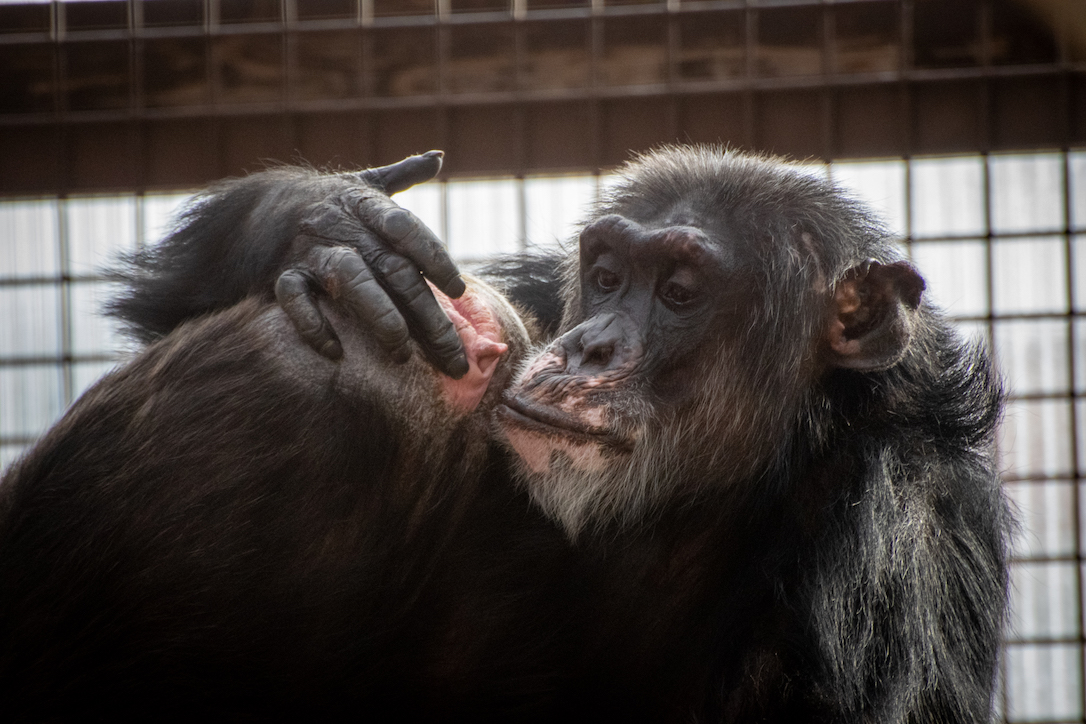
One advantage of the chimpanzee sexual cycle is that males will be extremely interested in, and friendly to, swollen females. In the wild, females can use this attention to work their way into new communities once they are mature enough to leave the one they were born in. For managers of captive chimpanzees, an awareness of the reproductive cycle can help us to merge smaller social groups into larger ones. Predictably, males will generally be more accepting of an unfamiliar female if she’s dragging an inflated swelling behind her. I’ve even noticed that, in some cases, the excitement of socialization events and proximity to males seems to cause rapid inflation of the swelling. Accordingly, tracking sexual swellings helps us to understand their social behavior in addition to monitoring their physical health.
As the sanctuary grows and the chimpanzees age, their group dynamics and individual health conditions will certainly change, too. Some treatments that don’t make sense now may be more practical, or even imperative, in the future. Alternatively, new developments will surely force us to reconsider existing protocols. Therefore, we will continue to be open-minded about reproductive issues to ensure that all the chimps remain comfortable, healthy and safe throughout their retirement.




